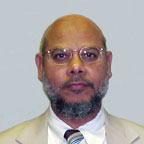In a typical corporation that provides some
type of product or service, the assembly lines, the shipping departments,
and the employees that produce the product and ship it out to
the customers provide the income to sustain the day-to-day operations
of the company. The long-term future, however, is in the hands
of the research and development (R&D) and engineering departments
of the company. Advanced R&D and development of newer products
and techniques are essential prerequisites for a successful future
of a corporation engaged in marketing its goods and services.
In a similar manner, the Education and Student Activities Committee
(ESAC) holds the future of the IEEE EMC Society (EMCS). As we
invest in our education, our future becomes brighter. As our education
dollars go towards “growing” newer and smarter engineers,
the future of our Society becomes brilliant. It is for this reason
the volunteers of ESAC undertake many activities that ensure a
bright future for our Society and the world that we live in.
ESAC conducts Design Fundamentals Tutorial Workshops, Experimental
Demonstrations, Modeling and Simulation Demonstrations, NARTE
certification workshops, Best Student Paper Contest, Best Student
Design Contest, Educational Video Project, and K-12 Outreach Efforts.
ESAC also provides an Educational Experiments Manual for classroom
learning and oversees the University Grant Program. The EMCS Board
of Directors (BoD) approved the “seed money” concept
unanimously when the idea was presented to it a few years ago.
The $10,000 US “seed money,” formally known as the University
Grant, is open to any accredited engineering college around the
world, and has been provided every year since the BoD approved
it. This Newsletter has published a few case histories of successful
programs at colleges and universities around the world that were
launched by the University Grant. Also, during the annual meeting
of the ESAC (that occurs at the annual EMCS Symposium), the award
winners of previous years have provided stimulating feedback about
their successes attributable to the Grants they received.
The University Grant program is a win-win program. The university
wins because it is able to use the Grant to launch its EMC course.
In most cases, the course has led to more awareness and understanding
about EMC even in the non-electrical engineering faculty. The
Grant program has opened up new vistas of scholarship that would
not have been possible otherwise. For example, in some cases cooperative
research projects were synergistically started between electrical
and non-electrical faculty. The EMCS also wins because this program
helps ensure that a newer and younger generation will choose the
EMC field as its career path, thereby increasing membership and
bringing in fresh ideas to expand the Society.
The Grant qualification process is not difficult. ESAC sends a
call for proposals to the Department Chairs of all electrical
engineering colleges in the Fall, and responses are due the following
Spring. The University Grant subcommittee of the ESAC makes a
decision and the award is presented during the Annual EMCS Symposium.
There is no “cookbook” solution to writing a winning
proposal. For more information about the proposals, please contact
the subcommittee chair, John Howard, at jhoward@emcguru.com.
The EMCS website https://www.ewh.
ieee.org/soc/emcs/edu/2004-univ-grant.html also provides information
about the University Grant program.
Following is an exciting success story from the 2002 recipient
of the University Grant “seed money” by Dr. Fred Tesche
of the Department of Electrical and Computer Engineering at Clemson
University of South Carolina. If you have any questions about
his material, please contact him at Fred@Tesche.com. For any other
information about EMC education and ESAC, please contact me at
maqsood@ieee.org. EMC
 EMC
Education and Student Activities Committee
EMC
Education and Student Activities Committee